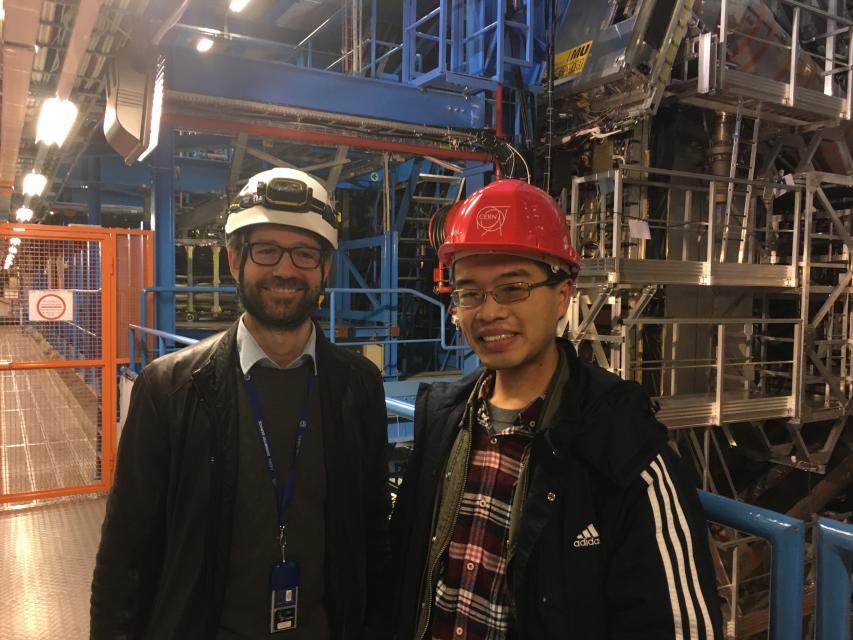Oxford particle physicists, working with colleagues at CERN’s Large Hadron Collider (LHC), have just released results of their search for some of the most sought-after particles in physics. The particles the team are seeking are relatives of the famous Higgs boson that are predicted by a theory known as Supersymmetry. This theory can fix several long-standing problems in our understanding of the universe, through its prediction that all existing particles have as-yet-unseen partners. The proposed partner of the Higgs boson – known as the Higgsino – is particularly interesting as it could be responsible for the mysterious dark matter which fills our universe.
Production of these elusive particles is expected to be extremely rare, so they must be drawn out from the billions of collisions at the 27 km Large Hadron Collider ring. “Selecting and recording the interesting data for this analysis from a continuous stream of up to 40 million collisions per second was a tough experimental challenge” explains Dr. Moritz Backes, the Oxford researcher who is responsible for these complex selection algorithms.
The Oxford team also searched for a second class of supersymmetric particles known as sleptons, using a method proposed in 2015 by an Oxford particle theory graduate student. The team focused on a particularly difficult class of SUSY models known as “compressed scenarios", in which the Higgsinos and sleptons decay to marginally lighter invisible SUSY particles leaving almost no characteristic traces in the detector.
Thanks to the excellent performance of the LHC and the large amounts of data collected it was possible for the team to supersede the sensitivity of the Large Electron Positron collider, the LHC’s predecessor.
"It’s really rewarding to have been at the core of the team that managed to get new sensitivity to these supersymmetric relatives of the Higgs boson for the first time in almost two decades” says Jesse Liu, the Oxford graduate student who performed much of the analysis.
While no signs of Higgsino or slepton particles were found so far, the results allow the team to reduce the number of permissible supersymmetric models.
As the Supersymmetry group leader Prof Alan Barr explains, “With these impressive results we have taken our first steps in a research programme that will fully exploit the potential of the LHC for many years to come.”

